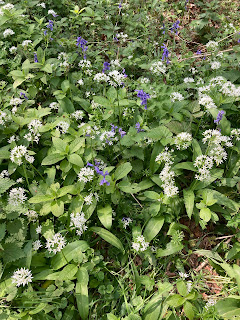Snowdrops
Bright and cheerful, Snowdrops (Galanthus nivalis) bring excitement to the earliest days of spring. Whilst they are a non-native species, they act as a well-known indicator of warmer days to come when they flower in January to March.
Snowdrops on campus, there was a good display this year!
Growing to 15cm tall, the straight stems have drooping white flowers at the ends, leading to the name Snowdrop- drooping and white, like snow. They are found across the UK, favouring damp soils so are often found in woodlands and along riverbanks, but can also be seen in parks, gardens and meadows. They normally flower at the start of the year, but increasing numbers of sightings have been reported in December, and even some in November. Therefore they are being used to monitor climate change and its impacts on wildlife.
You can report Snowdrop sightings here: Nature's Calendar (woodlandtrust.org.uk) . The Woodland Trust are monitoring changing climate and have a range of indicator species you can report to help with their research.
They largely reproduce by dividing their bulbs as they flower so early in the year that not many pollinators are around. However, they can provide an important nectar source for early emerged pollinators.
They are associated with the Christian festival Candlemas on the 2nd of February, being used to decorate churches. They also traditionally represent hope, due to their emergence signifying warmer times ahead. In WWII, American soldiers were nicknamed "Snowdrops", as their uniform was green and they wore white helmets or caps. Snowdrops have been used in traditional medicines to treat headaches and as a painkiller, and have exciting new uses in treating dementia!



Comments
Post a Comment